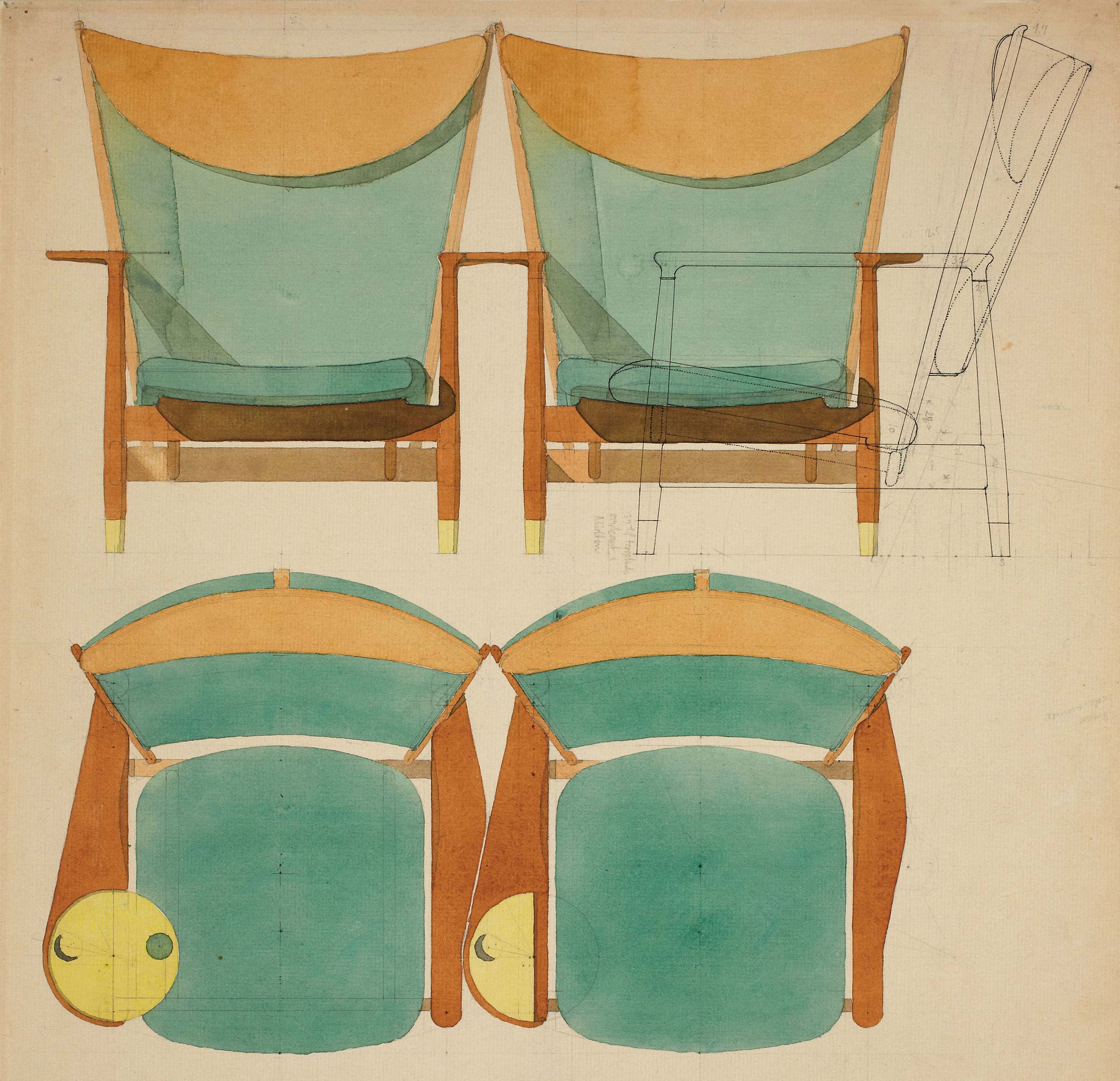A look into the home of
FINN JUHL

Furniture, art and a sensitivity to human dimension and desires were central to the creative life of Finn Juhl, one of the most inventive designers of the mid-twentieth century. With his own residence in the Charlottenlund suburb of Copenhagen, Juhl fashioned a new model for domestic design that extended far beyond Denmark, the traces of which can still be seen today.
Juhl relaxing in his Chieftain chair, 1959. Photography by Ulf Neilsen.
Shapes of the Chieftain chair recall shields of warriors.
Juhl pinned classical inspiration to the bulletin board next to his desk.
Juhl often worked at a desk he called the Drawing Board. A banquette spans one wall of the living room while bookcases flanking windows line another.
Juhl's Egyptian dining chairs replaced Windsor chairs he originally used around his Judas table.
A glass vitrine room divider holds china Juhl designed as well as ceramic pieces by artists he admired.
Juhl allotted half of the main bedroom to a sitting area near the fireplace. The multicolored cabinet in the foreground was designed expressly for gloves.
The seamlessness of Juhl’s work and home life are as apparent inside as they are out in the surrounding gardens. For all his milestones in furniture design, Juhl remained a humanist. Or rather, because he was a humanist, his milestones endure.
At the home where Juhl lived and worked for decades until his death in 1989, pale walls, mostly white, unite spaces that flow into each other. But the ceiling of each room is painted a distinct color, an approach which was and remains highly unusual.
Juhl’s clusters of intimate, human-scaled groupings of furniture in an open space is today a familiar arrangement, but when it debuted the configuration was strikingly original.
Trained in architecture and famous for furniture design, Juhl excelled where the two disciplines overlap, in interior design. For him, a house was just a building. Warmth, comfort and visual delights turned it into a home. His expansive art collection was as elemental as three-dimensional form in directing design decisions.
Moreover, the house was a complete Gesamtkunstwerk, a total work of art, in which no single element—interior, exterior, furnishings, art—dominated but instead complemented each other in support of a fully realized whole.
Completed in 1942, Juhl designed his home from the inside out, unfettered by floor plan and elevation; rather his vision for furniture arrangements drove the orientation of rooms and the placement of windows. The end result was a dwelling whose modest size belies its enormous influence. What seems unremarkable now was radical in its time.
In designing chairs, for which he is best known, Juhl choreographed a dance between the frame and the upholstery, the carrying and the carried, the seat and the sitter.
A trained architect, Juhl approached furniture design without concerns of strength and structure. Rather his unconventional work was driven by organic sculptural vision, an exploration of load-bearing elements vs. flat planes, and a pre-occupation with forms designed to accommodate the human body.